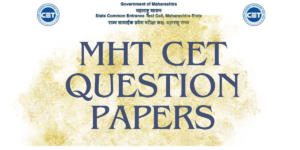Table of Contents
Quantitative Aptitude for CLAT 2023
Short collections of facts, statements, graphs, or other written, visual, or diagrammatic representations of numerical data will come in the CLAT Quantitative Aptitude section. Candidates must carefully read the paragraph or information provided, extrapolate information from it, use mathematical procedures, and then respond to the questions that follow. Only 10% of the CLAT exam’s weight is given to the Quantitative Techniques portion, but for candidates competing for admission to the top National Law Universities, this could be the determining factor (NLUs). In the Quantitative Techniques section of the CLAT exam, a candidate cannot risk losing points by not studying. Although the CLAT exam may only have 13–17 questions, applicants might benefit from 10% of the weighting by strategically preparing for it.
CLAT 2023 Quantitative Techniques: Syllabus & Pattern
Before starting preparation, candidates should understand the exam pattern and syllabus for CLAT Quantitative Aptitudes section as described below:
| Particulars | CLAT Quantitative Techniques Pattern |
|---|---|
| Type of questions | Passages followed by MCQs |
| Number of reading passages | 3-4 comprehensions of 300 words each |
| Total questions | 13-17 |
| Total marks | 13-17 |
| Marking | One mark for each correct answer |
| Negative marking | -0.25 for incorrect answer |
| Approximate weightage in CLAT exam | 10% |
CLAT Syllabus 2023- UG in Details
| Sr. No | Subject | Syllabus |
| 1 | English Language | Passage Comprehension
|
| 2 | Current Affairs and General Knowledge | Passage-based questions
Required Knowledge
|
| 3 | Legal Reasoning | Passage-based questions
|
| 4 | Logical Reasoning | Passage-based questions
|
| 5 | Quantitative Techniques | Passage/Graphs/Other Representations
Required Knowledge
|
CLAT PREPARATION STUDY MATERIAL 2023 ONLINE
Quantitative Aptitude Questions for CLAT 2023
Q1) A’s salary is 50% more than B’s, then by what percentage B’s salary is lesser than A’s salary?
(a) 182/3%
(b) 80%
(c) 271/3%
(d) 331/3%
Q2) Quicklime contains 42.85% of oxygen by weight. Determine the weight of oxygen in 749 gm quicklime.
(a) 214 gm
(b) 321 gm
(c) 316 gm
(d) 351 gm
Q3) If 60% of students in a college are boys and total number of girls in the college is 460, find the number of boys in college.
(a) 620
(b) 780
(c) 690
(d) 700
Q4) 32% of a number is less than 16% of 450 by 24. Find the number.
(a) 280
(b) 150
(c) 250
(d) 190
Q5) Two numbers are respectively 20% and 30% less than a third number. What percent is the second of the first?
(a) 83 4/5%
(b) 87.5%
(c) 74 1/3%
(d) 78.4%
Q6) 48 when increased by 12.5% equals x. Find the value of x.
(a) 54
(b) 60
(c) 60.5
(d) 173
Q7) Population of a city increase at the rate of 12.5% every year but due to infection in the city the population decreases by 10% in last year. If present population of the city is 5832, then find out the population of city 3 years ago?
(a) 5200
(b) 5400
(c) 5100
(d) 5120
Q8) Of the 1000 inhabitants of a town, 60% are males of whom 20% are literate. If, of all the inhabitants, 25% are literate, then what percent of the females of the town are literate?
(a) 32.5
(b) 43
(c) 46.6
(d) 53.2
Q9) If the price of a commodity is increased by 30%, by how much % a consumer must reduce his consumption so as to keep the expenditure same?
(a) 100/13
(b) 200/13
(c) 300/13
(d) 400/13
Q10) A fruit seller had some apples. He sells 40% apples and still has 420 apples. Originally, he had:
(a)600
(b)500
(c)700
(d)None of These
Related Posts:
Quantitative Aptitude Solutions for CLAT 2023
To find the solutions to the above questions watch the given video
Quantitative Aptitude for CLAT 2023 FAQs
Que. What is quantitative aptitude?
Ans. Quantitative aptitude is an inseparable and integral part of aptitude exams in India. It tests quantitative skills along with logical and analytical skills.
Que. What are the important topics of the CLAT Maths Syllabus?
Ans. The important topics of the CLAT Maths Syllabus are Profit & Loss, InterestNumber system, Surds & Indices, Ratio & Proportion, Percentage, HCF & LCM, and Interest.
Que. How can I better for CLAT Maths Section?
Ans. By doing hard work consistently one can be better in CLAT Maths Section.


 JEE Mains Session 2 Result 2024 Out, Get...
JEE Mains Session 2 Result 2024 Out, Get...
 MHT CET Previous Year Papers, Download M...
MHT CET Previous Year Papers, Download M...
 Madhyamik Result 2024 Date, WB Madhyamik...
Madhyamik Result 2024 Date, WB Madhyamik...














